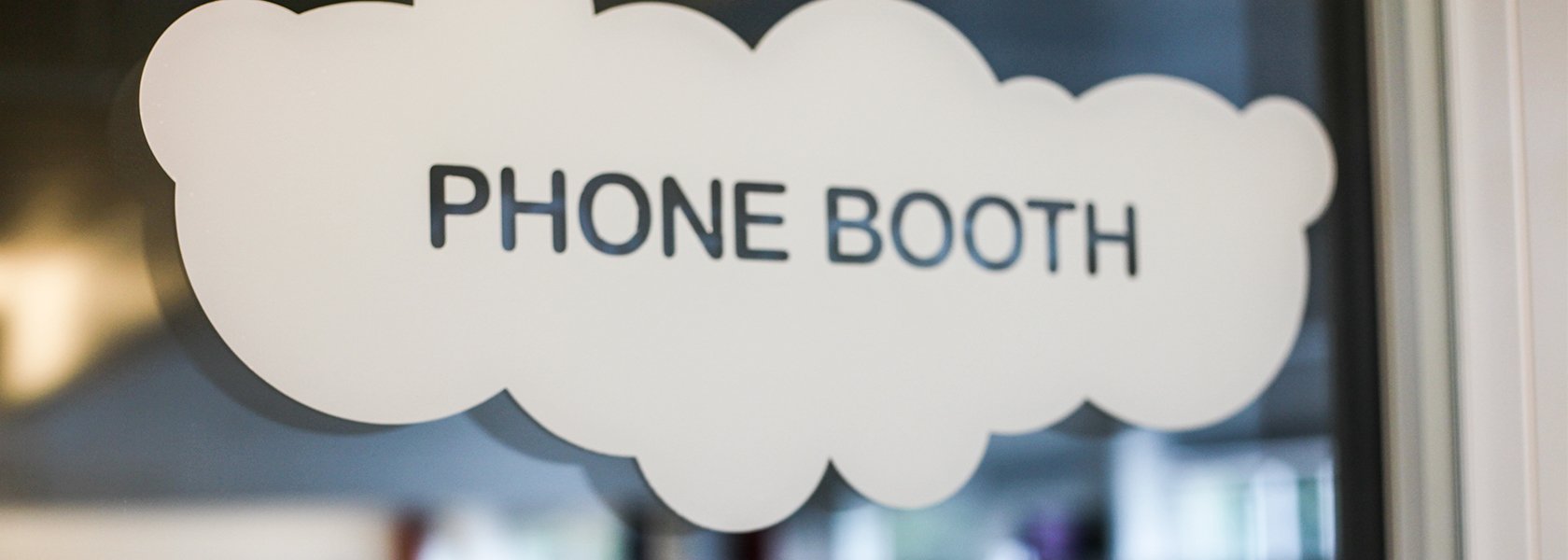
When we talk about the different types of office floor plans, we have discussed the pros and cons for each in relation to workplace productivity. While a certain type of office layout may appeal to you aesthetically, the most important aspect in choosing a floor plan should be the ability for your staff to complete their work. In the case of open floor plans, you may be better equipped in this manner if you adopt the use of huddle rooms, which can act as a buffer, similarly to activity based offices. When you use huddle rooms for teams to collaborate and work together, or as secluded spaces for individual work, you can ensure that productivity in your office stays high.
When you think about huddle rooms, the concept of what a huddle is should come to mind: the act of putting your heads together as a group in order to plan and coordinate your next action steps. Huddle rooms can be small spaces spread around in your office where you can have impromptu formal meetings, daily stand-up meetings, and quick status updates between colleagues.
It can also be small pods, closed off cubicles, phone booths, or other creatively small spaces that hold no more than five people on average. They are meant to serve similar purposes to stand-up meetings: making workplace interactions brief and high-focused. Huddle rooms are meant to have limited distractions, and also serve to allow team members to meet in private areas without disrupting coworkers in open desk areas.
As with activity based workplaces, huddle rooms allow workers to use different areas for the office for different purposes in order to be most productive. They are optimal for high focus collaborations and meetings, and giving employees options for rooms based on their meeting purpose and personal preferences, you can ensure that your team can do their best work.
Huddle rooms also offer flexibility that traditional offices don’t always offer. Typically huddle rooms don’t need to be scheduled or booked in advance, you can simply jump inside when the need for a private conversation arises. This ability to be impromptu can also help with allowing your staff to be timely, and address any issues in real time as they arise.
Huddle rooms can also be much less expensive to equip than traditional conference rooms. If you vary the type of huddle room in your office, you may have ones that include video conferencing or projection equipment, but generally speaking they can be very low tech. When the emphasis is on person-to-person interaction, you simply only need to be sure that the wifi connection is strong.
 Phone booths are excellent to use when working in open floor plans.
Phone booths are excellent to use when working in open floor plans.
Last but not least, huddle rooms can also actually add to your employee’s overall job satisfaction and their happiness at work. Furnish your huddle rooms with fun chairs (or beanbags, or hammocks, or recliners), or make each room a different theme or color. Employees can choose to use the rooms that they like best, and can even gain positive energy from using rooms that are fun or vibrant. The change of scenery from their cubicle or open desk area can be just what your staff needs to enjoy work just a little bit more.
As with any office floor plan strategy, you should be considering form and function. When you incorporate huddle rooms, you can create unique spaces for your staff to be collaborative and productive, flexible, and maybe even enjoy being in their office environment.
These Stories on Workplace design
Meetio AB/Logitech Nordics AB
Hamngatan 4
211 22, Malmö
Sweden
Magnus Ladulåsgatan 3
SE-118 65 Stockholm
Sweden
Sweden: +46-(0)10-101 95 60
Comments (1)